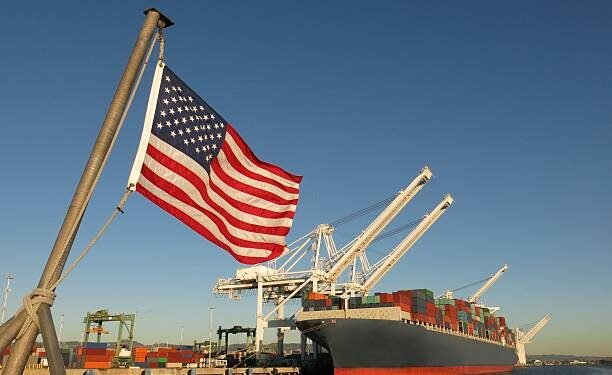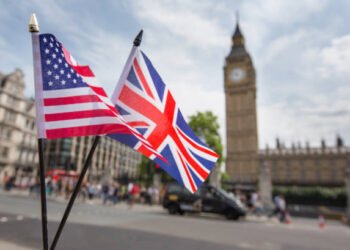Advertisement
For countless ambitious individuals around the world, the United States has continued to represent the ultimate destination for building a prosperous career. Known for its economic diversity, vibrant job markets, and competitive salaries, the country has remained a top destination for international workers. However, the process of applying for jobs as a foreigner in the U.S. has involved more than just submitting a resume, It has required a strategic understanding of visa rules, employer expectations, and documentation procedures.
To simplify this journey, this guide has been designed to present the easiest and most effective ways to apply for jobs in the USA as an international worker. Whether you’re skilled in tech, healthcare, engineering, or even hospitality, this post will walk you through every step necessary to improve your success rate and legally work in the United States.
Advertisement
Understanding the U.S. Job Market for International Workers
How the U.S. Economy Creates Opportunities for Foreign Talent
The U.S. economy has relied heavily on both local and international labor to sustain growth across industries. From Silicon Valley to rural health clinics, gaps have existed that foreign professionals have consistently helped fill. In-demand fields such as software engineering, nursing, and skilled trades have continued to welcome international expertise.
Why Employers Hire International Workers
Global talent has been sought for specialized knowledge, diversity, and innovation. Many U.S. companies have faced skill shortages in key areas and have relied on foreign workers to remain competitive. With visa sponsorship and remote work flexibility becoming more normalized, hiring foreigners has been viewed as a strategic move.
Step-by-Step Guide: How to Apply for Jobs in the USA as a Foreigner
Step 1: Identify the Right Type of Visa
Before applying for jobs, it has been essential to know which work visas align with your goals.
- H-1B Visa: Issued for skilled workers in specialty occupations (e.g., tech, finance, engineering).
- L-1 Visa: Suitable for intracompany transfers.
- O-1 Visa: Granted to individuals with extraordinary ability.
- TN Visa: Exclusive to Canadian and Mexican citizens under NAFTA.
- J-1 Visa: Used for internships and training programs.
- EB Visas: Employment-based green cards for permanent residency.
Each visa type has included eligibility conditions, application deadlines, and employer obligations. Legal counsel or licensed immigration advisors have often been consulted for guidance.
Step 2: Create a U.S.-Style Resume and Cover Letter
U.S. employers have expected concise, achievement-oriented resumes (usually one page for early career, two for experienced professionals). The following structure has been widely used:
- Header: Name, contact info, LinkedIn profile.
- Professional Summary: A 2–3 line pitch of your experience.
- Skills: Tools, languages, certifications.
- Experience: Company name, job title, quantifiable achievements.
- Education: Degree, school, dates.
- Certifications: Relevant licenses (e.g., PMP, CPA, AWS).
Cover letters have been tailored for each job, emphasizing what value the candidate would bring to the company and how the position aligns with the applicant’s long-term goals.
Step 3: Search for U.S. Jobs That Sponsor Foreign Workers
A job search has been most effective when targeted toward companies known to sponsor international workers. Websites such as:
- MyVisaJobs.com
- H1BGrader.com
- LinkedIn (with filter “visa sponsorship available”)
- Indeed (add “visa sponsorship” to search)
…have made this process more manageable. Employer databases, company reviews, and immigration sponsorship history have guided job seekers on where to focus.
Step 4: Apply Through Trusted Platforms and Employer Portals
Applications have typically been submitted via the following:
- Company career pages (best for direct engagement)
- Recruitment agencies specializing in international hires
- LinkedIn Easy Apply (especially for tech and remote jobs)
- USAJobs.gov (for federal and international public opportunities)
Resumes have been tailored with the keywords from job descriptions to pass through ATS (Applicant Tracking Systems).
Step 5: Prepare for U.S.-Style Job Interviews
Interview formats in the U.S. have often included multiple rounds:
- Phone screening: Assessing language, availability, and interest.
- Technical interviews: For engineering, IT, or finance roles.
- Behavioral interviews: Using the STAR method (Situation, Task, Action, Result).
- Cultural fit assessment: Particularly in startups and remote-first organizations.
Mock interviews, soft skill polishing, and understanding American business etiquette have boosted interview performance.
Industries That Frequently Hire International Workers
Technology & Engineering
Software developers, data scientists, cybersecurity analysts, and AI professionals have been among the most sponsored.
Healthcare
Nurses, physiotherapists, caregivers, and allied health professionals have continued to enjoy streamlined recruitment through EB-2 and EB-3 visa pathways.
Finance and Accounting
Global firms such as Deloitte, KPMG, and PwC have consistently recruited international accountants, auditors, and analysts.
Education
Teachers in STEM, special education, and language instruction have found job openings, especially in underserved U.S. districts.
Skilled Trades and Logistics
Truck drivers, mechanics, welders, and construction supervisors have been in high demand, especially under programs targeting labor shortages in agriculture and infrastructure.

Visa Sponsorship: What It Means and How to Secure It
Employer Sponsorship Explained
Visa sponsorship has meant that an employer is willing to:
- Submit required paperwork to the U.S. Department of Labor and USCIS
- Pay visa processing fees (in most cases)
- Legally sponsor the worker to remain in the U.S. during employment
How to Make Yourself Attractive to Sponsors
- Specialized skills (hard to find locally)
- Certifications (recognized in the U.S.)
- Advanced English proficiency
- U.S. degree or previous work experience
- Willingness to relocate and remain long-term
Employers have prioritized candidates who required minimal adjustment or training.
Best Cities in the U.S. for International Job Seekers
New York City
Known for finance, healthcare, hospitality, and tech opportunities. Also home to a vast immigrant community.
San Francisco / Silicon Valley
Tech capital of the world. Highly competitive but home to many H-1B sponsoring companies.
Houston and Dallas
Booming energy and healthcare industries. Lower cost of living compared to other metros.
Chicago
Manufacturing, finance, and logistics hub with many immigrant support programs.
Seattle
Amazon, Microsoft, and other tech giants have regularly recruited internationally.
Common Mistakes to Avoid When Applying from Abroad
Submitting Generic Applications
Personalized applications have had a higher success rate. Employers have often ignored copy-paste resumes or cover letters.
Applying Without a Clear Visa Plan
Employers have hesitated to engage with applicants who couldn’t explain what kind of visa or sponsorship they would require.
Not Networking
Many jobs have been filled via referrals. Failing to connect on LinkedIn or attend virtual job fairs has limited visibility.
Tips to Strengthen Your U.S. Job Application as an Immigrant
Obtain International Certifications
Certifications such as PMP, AWS, CPA, and IELTS have made candidates more competitive and qualified.
Gain Remote Work Experience with U.S. Clients
Freelancing or contracting through platforms like Upwork or Toptal has provided credibility and U.S. business exposure.
Build a Strong LinkedIn Profile
A detailed and active profile with recommendations, certifications, and professional connections has been essential for discovery by recruiters.
Practice for English Proficiency Tests
English fluency has remained non-negotiable. TOEFL, IELTS, or Duolingo scores have often been required.
Frequently Asked Questions (FAQs)
1. Can I apply for a U.S. job without a visa?
Yes, you can apply for jobs in the U.S. without a visa. However, a U.S. employer must be willing to sponsor your visa before you are legally allowed to work. Most employers prefer applicants who clearly state the visa type they are eligible for or are seeking sponsorship for.
2. What are the easiest U.S. visas to obtain for work purposes?
The easiest work visas depend on your qualifications. For skilled professionals, the H-1B visa is common. For Canadians and Mexicans, the TN visa is often faster and less competitive. For those in cultural exchange or training programs, the J-1 visa is considered more accessible.

3. How can I find U.S. companies that sponsor foreign workers?
You can use platforms such as:
- MyVisaJobs.com
- H1BGrader.com
- LinkedIn job filters (set to “Visa Sponsorship Available”)
- Official company career pages that mention sponsorship in job postings
4. Do I need a degree to apply for jobs in the USA?
Not all jobs require a degree. Many skilled trade jobs, caregiving, trucking, and construction roles may only require experience and relevant certifications. However, for H-1B and some other visas, a bachelor’s degree or higher is mandatory.
5. What industries in the U.S. hire the most international workers?
The top industries include:
- Technology and software development
- Healthcare and nursing
- Finance and accounting
- Engineering
- Education (especially STEM and special education)
- Logistics and skilled trades
6. What are the chances of getting hired from outside the U.S.?
The chances increase if:
- You apply to companies with a history of sponsoring visas
- Your skills are in high demand in the U.S.
- You hold international certifications
- You demonstrate English fluency and adaptability
Remote roles or internships have also helped candidates transition into full-time U.S. employment.
7. Will my employer pay for my visa?
In most cases, yes. U.S. employers are responsible for paying fees related to H-1B and other employment-based visa applications. However, the exact cost-sharing terms should be clarified during the job offer process.
8. How long does it take to get a U.S. work visa after being hired?
The timeline depends on the visa type:
- H-1B visa: 3 to 6 months (or longer during lottery season)
- L-1 or TN visa: 2 to 8 weeks
- O-1 or J-1 visa: 1 to 3 months
Premium processing (where available) can speed up the process.
9. Can I bring my family with me on a U.S. work visa?
Yes. Most U.S. work visas allow dependents (spouse and children under 21) to accompany the visa holder. Some dependent visas (like H-4) may also allow spouses to apply for work authorization.
10. What should I do if my job application is repeatedly rejected?
You should:
- Tailor your resume and cover letter for each application
- Improve your English communication skills
- Gain more experience in your field or obtain certifications
- Network with professionals in the U.S.
- Focus on companies that are known to sponsor foreign workers
- Consider applying for internships or remote positions first
Conclusion: Your U.S. Career Journey Starts Now
Working in the United States has been a dream within reach for those who’ve followed a structured plan, built relevant skills, and aligned their job search with the visa process. By preparing well, targeting the right industries, and avoiding common mistakes, international workers have increased their chances of securing employment and legally relocating to the U.S.
If your goal is to unlock new economic opportunities and work in one of the world’s most dynamic markets, then this guide is your blueprint for success in 2025.


















